-
The Female Quixote: or The Adventures of Arabella
Charlotte Lennox, Margaret Dalziel, Margaret Anne Doody
Paperback (Oxford University Press, June 15, 2008)The Female Quixote, a vivacious and ironical novel parodying the style of Cervantes, portrays Arabella, the beautiful daughter of a marquis, whose passion for reading romances colors her approach to her own life and causes many comical and melodramatic misunderstandings among her relatives and admirers. Both Joseph Fielding and Samuel Johnson greatly admired Lennox, and this novel established her as one of the most successful practitioners of the "Novel of Sentiment."About the Series: For over 100 years Oxford World's Classics has made available the broadest spectrum of literature from around the globe. Each affordable volume reflects Oxford's commitment to scholarship, providing the most accurate text plus a wealth of other valuable features, including expert introductions by leading authorities, voluminous notes to clarify the text, up-to-date bibliographies for further study, and much more.
-
The Female Quixote: or The Adventures of Arabella
Charlotte Lennox, Margaret Dalziel, Margaret Anne Doody, Duncan Isles
Paperback (Oxford University Press, Oct. 22, 1998)The Female Quixote, a vivacious and ironical novel parodying the style of Cervantes, portrays Arabella, the beautiful daughter of a marquis, whose passion for reading romances colors her approach to her own life and causes many comical and melodramatic misunderstandings among her relatives and admirers. Both Joseph Fielding and Samuel Johnson greatly admired Lennox, and this novel established her as one of the most successful practitioners of the "Novel of Sentiment."
-
The Female Quixote Or The Adventures Of Arabella
Charlotte Lennox
Paperback (CreateSpace Independent Publishing Platform, Jan. 8, 2009)Charlotte Lennox's The Female Quixote, or The Adventures of Arabella is part imitation of and part commentary on Miguel de Cervantes' Don Quixote. Written in the mid-eighteenth century, among a rash of Cervantes imitations, Lennox's novel was by far the most popular and enduring of its kind. Simultaneously a critique of Cervantes' idealism and an appreciation of his humor, his irony, and his formal achievements, the novel has also been read as a feminist commentary on the consequences of women's estrangement from male society.The novel explores various dichotomies and oppositions: realism and idealism, sanity and hysteria, the romance and the novel, female and male, and fiction and history, among others.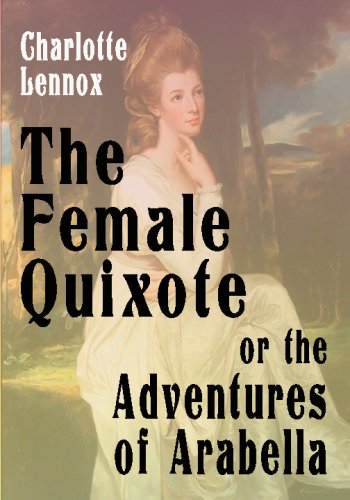
-
The Female Quixote, Or, The Adventures of Arabella
Charlotte Lennox
Paperback (Digireads.com, Sept. 19, 2011)Little is definitively known about Charlotte Lennox (1730?-1804) before the publication of her novels and poetry other than she was probably born in Gibraltar to the English captain-lieutenant, James Ramsay, and moved to New York when she was ten. It is thought that she spent much of her childhood reading romance novels as a solution to the boredom of living at small frontier outposts. She was particularly drawn to Miguel de Cervantes' "Don Quixote", and in 1752 she published "The Female Quixote, Or, The Adventures of Arabella" to enthusiastic reception. The work is part imitation and part commentary on the original, casting a privileged young daughter of a marquis, Arabella, as the novel's heroine. Just like Don Quixote, Arabella embarks on a series of adventures in the countryside, all the while mistakenly thinking herself to be the archetypal maiden of a Romance. This novel served as the basis for Jane Austen's "Northanger Abbey".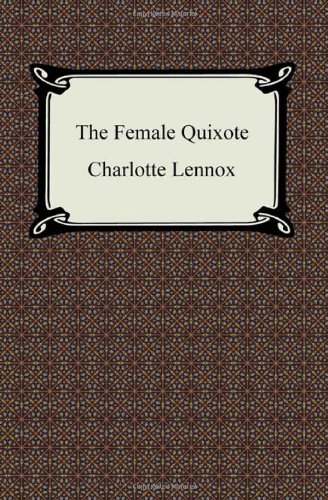
-
The Female Quixote: Or the Adventures of Arabela
Charlotte Lennox
Paperback (Pandora Pr, May 1, 1986)Reading romance novels gives Arabella, an eighteenth century lady, a distorted perception of reality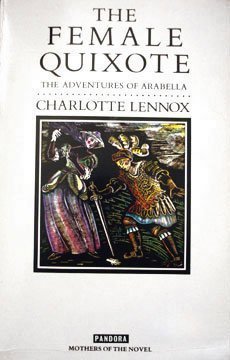
-
The Female Quixote, Or, the Adventures of Arabella
Charlotte Lennox
Paperback (Oxford Univ Pr (T), Nov. 24, 1989)"The Female Quixote" (1752), a vivacious and ironical novel parodying the style of Cervantes, portrays the beautiful and aristocratic Arabella, whose passion for reading romances leads her into all manner of misunderstandings. Praised by Fielding, Richardson and Samuel Johnson, the book quickly established Charlotte Lennox as a foremost writer of the Novel of Sentiment. With an introduction and full explanatory notes, this edition should be of particular interest to students of women's literature, and of the 18th-century novel.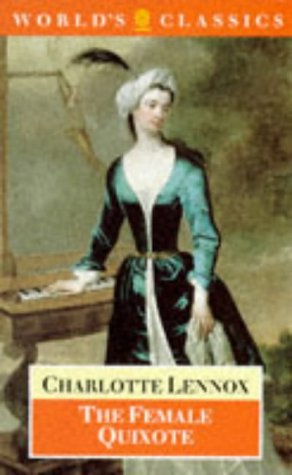
-
The Adventures of Don Quixote
Miguel de Cervantes, G. B. McIntosh, Gustave Dore, Michael J. Marshall, E. D. Hirsch Jr., Dominick Daly
language (Core Knowledge Foundation, March 10, 2014)From the IntroductionThere is a story that the king of Spain once looked out a window onto the street and saw a man walking along reading a book, slapping his head and roaring with laughter. “I’ll bet he is reading Don Quixote,” the king exclaimed.It certainly would have pleased Miguel de Cervantes if the king won such a wager, because Cervantes meant for people to laugh as they read his book. Doctors in his day believed that the cure for melancholy, a feeling of sadness that we often call depression, was to laugh out loud a lot. Cervantes also wanted readers to see that a sense of humor makes it easier to cope with life’s disappointments and people’s faults.Besides wanting to make people laugh, Cervantes said he also wrote to rid people of their taste for romances, those fantastic stories about bold knights and fair damsels, evil giants and sorcerers, dragons and quests. But even though Cervantes said he disliked romances because they gave people foolish ideas, it is clear he was fond of them himself.Romances tried to uphold the ideals of chivalry, a medieval code of behavior for knights that gave an air of nobility and grandeur to all the unlikely events these tales told. The knights who were the stories’ heroes were tested in ordeals, most often in combat, and their success was a proof of their virtue and honor. Some who roved in search of adventure (they were called knights-errant) sought ordeals that tested just themselves. The knight’s devotion to a maiden was tested, too, to prove his self-control and patience. Thus, the more a knight suffered in love and waited to be accepted by the maiden, the more he proved his feeling was true.That is all fine in the world imagined in a book, according to Cervantes, but try living that way in the everyday world and you’ll seem crazy. This points out the difference between a romance and a novel: a romance describes uncommon things that almost certainly couldn’t be true, whereas a novel describes ordinary things so convincingly that one believes the story actually could have happened. Some people say Don Quixote is the first modern novel because it put the events of a romance into ordinary settings, and so made their outcomes funny, and also because its main character is not a superhero but an ordinary man whom readers grow to understand and even admire.Don Quixote is one of the most famous characters in literature. His name has become a word, “quixotic,” that means to do something foolishly impractical for the sake of a high ideal. Equally famous is his companion Sancho Panza. As Don Quixote wanders Spain thinking of himself as a storybook knight-errant, Sancho takes the role of the knight’s loyal squire. Don Quixote is idealistic and intelligent, but crazy, because he is living in the everyday world but believing it is the world of romances. He is too old and weak to be a knight-errant, but he doesn’t think so. Sancho has solid common sense and sees everyday reality clearly, but he is ignorant and willing to lie. He knows it is useless to try to reason with madmen and so he plays along, hoping to find a profit in it. Cervantes seems to wish we could mix the best qualities of this knight and squire in ourselves; then we would see our everyday selves as we truly are and still strive to be nobler and better.Cervantes’ great novel, so wise about human nature and so loving in telling the plain truth about it, was a sensational success. It was well known even before it was printed, because his friends who had read its handwritten pages could not help sharing its funny episodes with others. Since its first publication in 1605, Don Quixote has been translated into more languages than any other book ever written except the Bible. E. D. Hirsch, Jr.Charlottesville, Virginia
-
The Female Quixote, or the Adventures of Arabella
Charlotte Lennox
Hardcover (Oxford U.P, March 24, 1970)Lennox, Charlotte / Dalziel, Margaret (editor) / Isles, Duncan (editor). The Female Quixote or The Adventures of Arabella. London, Oxford University Press, 1970. 13.5 cm x 20.5 cm. XXIII, 427 pages. Original hardcover with original dustjacket in protective Mylar. Excellent condition with only very minor signs of external wear. The Female Quixote, a vivacious and ironical novel parodying the style of Cervantes, portrays Arabella, the beautiful daughter of a marquis, whose passion for reading romances colors her approach to her own life and causes many comical and melodramatic misunderstandings among her relatives and admirers. Both Joseph Fielding and Samuel Johnson greatly admired Lennox, and this novel established her as one of the most successful practitioners of the Novel of Sentiment. (Amazon)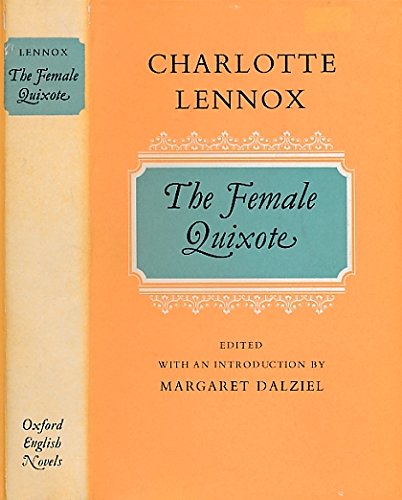
-
The Adventures of Don Quixote
Miguel De Cervantes Saavedra, J. M. Cohen
Paperback (Penguin, Jan. 1, 1983)Very good + See pic.
-
The Adventures of Don Quixote
Miguel de Cervantes Saavedra
Paperback (Penguin, July 6, 1950)Classic Literature, Literary Studies, Spanish Literature
-
The Adventures of Don Quixote
Miguel De Cervantes, Gustave Dore
(Barnes and Noble, Jan. 1, 2007)A gorgeous big hard cover book- makes a great gift for the Quixote lover!
-
The Adventures of Don Quixote
Miguel de Cervantes Saavedra, W. Heath Robinson
Hardcover (State Street Press, July 6, 2002)Excerpt from Adventures of Don QuixoteTo appreciate Don Quixote, we have no need for lengthy introductions. To understand him, read, and appreciation will come. Cervantes wished to, reveal in their true light, the farcical, extravagant, nonsensical Libros ale Caballeria (books on knight-errantry), which put forth a false ideal, ignoring the true chivalry of a true knight, and by this false ideal did great harm in Spain. The result was Don Quixote, which is at the same time a novel, a satire, a history and a picture of Spanish life. Do not thinkthat Cer vantes mocked the great' ideals of chivalry. He loved truth, uprightness and courage - his own career provesw tihs - but he wished to Show that valour, generosity, hope and justice were the bases of chivalric life. Don Quixote has been thought to be mad, but if mad ness consists in going through the world seeking to combat ignorance, cruelty, superstition and roguery, we must confess that he was not sane, and saw life in a mirage of the vicious books on chivalry.Sancho Panza is a very human personage. He is a peasant, ignorant but shrewd, who accompanies a master keen to fight injustice, knavery, and to pro tect the poor and the humble, but who, with a greater knowledge of mankind, tries to protect him from those self-seekers who might impose upon his good nature and his eagerness to help the oppressed.About the PublisherForgotten Books publishes hundreds of thousands of rare and classic books. Find more at www.forgottenbooks.comThis book is a reproduction of an important historical work. Forgotten Books uses state-of-the-art technology to digitally reconstruct the work, preserving the original format whilst repairing imperfections present in the aged copy. In rare cases, an imperfection in the original, such as a blemish or missing page, may be replicated in our edition. We do, however, repair the vast majority of imperfections successfully; any imperfections that remain are intentionally left to preserve the state of such historical works.